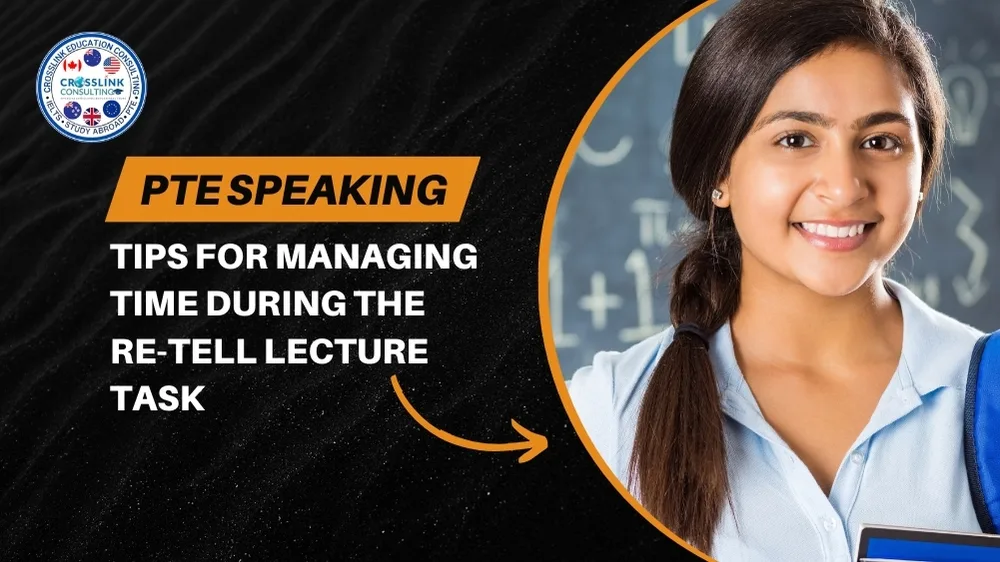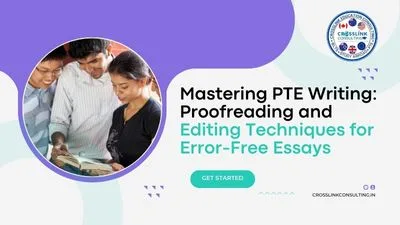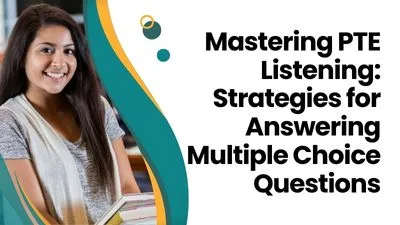In the Pearson Test of English (PTE), effective time management is crucial for maximizing your score in the speaking section. One particularly challenging task that requires adept time management skills is the Retell Lecture task. This task assesses your ability to listen to a short academic lecture and summarize it in your own words within a given timeframe. In this blog post, we’ll explore some valuable time management tips to help you excel in the Retell Lecture task and achieve success in the PTE speaking section.
Understanding the Retell Lecture Task:
The Retell Lecture task is part of the Speaking section in the PTE exam. In this task, you will listen to a short academic lecture or presentation, typically lasting between 60 to 90 seconds. After listening to the lecture, you will have 40 seconds to retell the main points of the lecture in your own words. The goal is to summarize the key ideas and information presented in the lecture accurately and coherently within the allotted time.
Time Management Tips for the Retell Lecture Task:
Active Listening:
Focus intently on the lecture as it is being played. Pay attention to the main ideas, supporting details, and any examples or explanations provided.
Take brief notes while listening to the lecture to help you remember key points and organize your thoughts during the retelling phase.
Identify Key Points:
Quickly identify the main points and key information presented in the lecture. Look for the central theme or topic, important concepts, and any noteworthy examples or illustrations.
Prioritize the most relevant and significant information to include in your retelling, focusing on capturing the essence of the lecture rather than trying to recount every detail.
Structure Your Response:
Organize your retelling in a clear and logical manner, following a structured format such as introduction, main points, and conclusion.
Start by briefly introducing the topic of the lecture and providing context for your retelling. Then, present the main points and supporting details in a coherent sequence.
Use transition words and phrases to connect ideas and ensure smooth flow between sentences and paragraphs.
Practice Time Management:
Practice retelling lectures within the allotted 40-second timeframe to build familiarity and confidence with the task.
Use a timer during practice sessions to track your progress and ensure that you can deliver your retelling within the specified time limit.
Practice pacing yourself and speaking at a steady rate to avoid rushing or running out of time during the retelling phase.
Summarize Concisely:
Aim to summarize the main points of the lecture concisely and efficiently. Avoid unnecessary repetition or elaboration and focus on conveying the essential information within the time limit.
Use precise and concise language to express your ideas clearly and effectively. Eliminate filler words or phrases that do not add value to your retelling.
Stay Calm and Confident:
Maintain a calm and composed demeanor during the retell lecture task. Stay focused and confident in your ability to summarize the lecture accurately within the given timeframe.
If you encounter difficulties or miss some details during the lecture, remain poised and continue with your retelling using the information you have gathered.
Effective time management is essential for success in the Retell Lecture task of the PTE speaking section. By implementing these time management tips and practicing regularly, you can enhance your ability to summarize lectures accurately and coherently within the allotted time. Remember to stay focused, prioritize key points, and structure your retelling in a clear and organized manner. With diligent practice and strategic time management, you can master the Retell Lecture task and achieve your desired score in the PTE speaking section.
Team Crosslink wishes you All the best!























